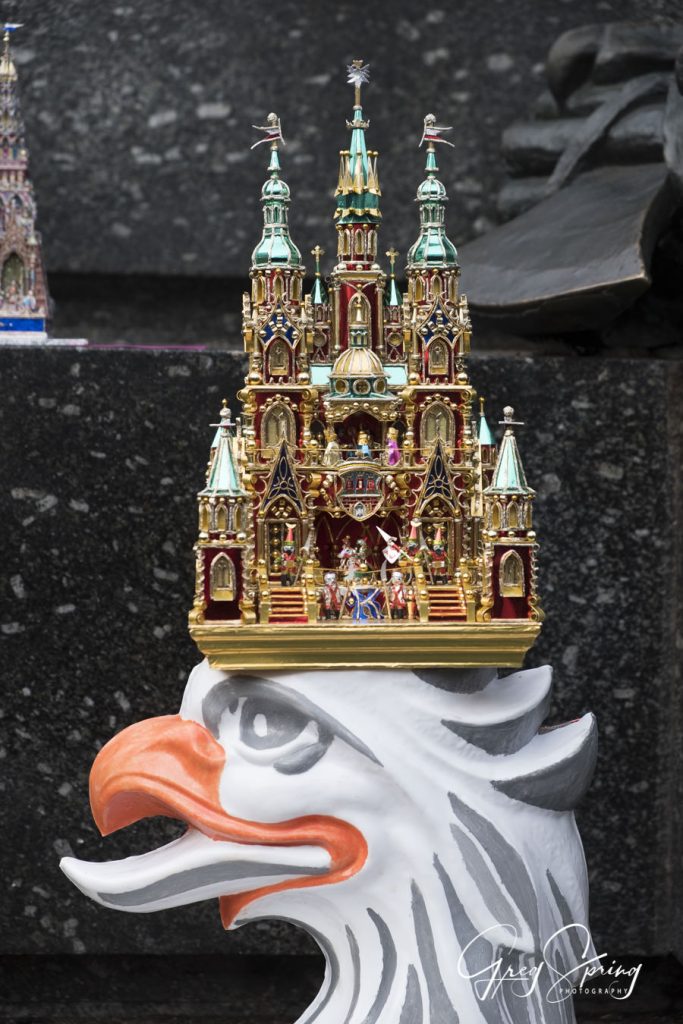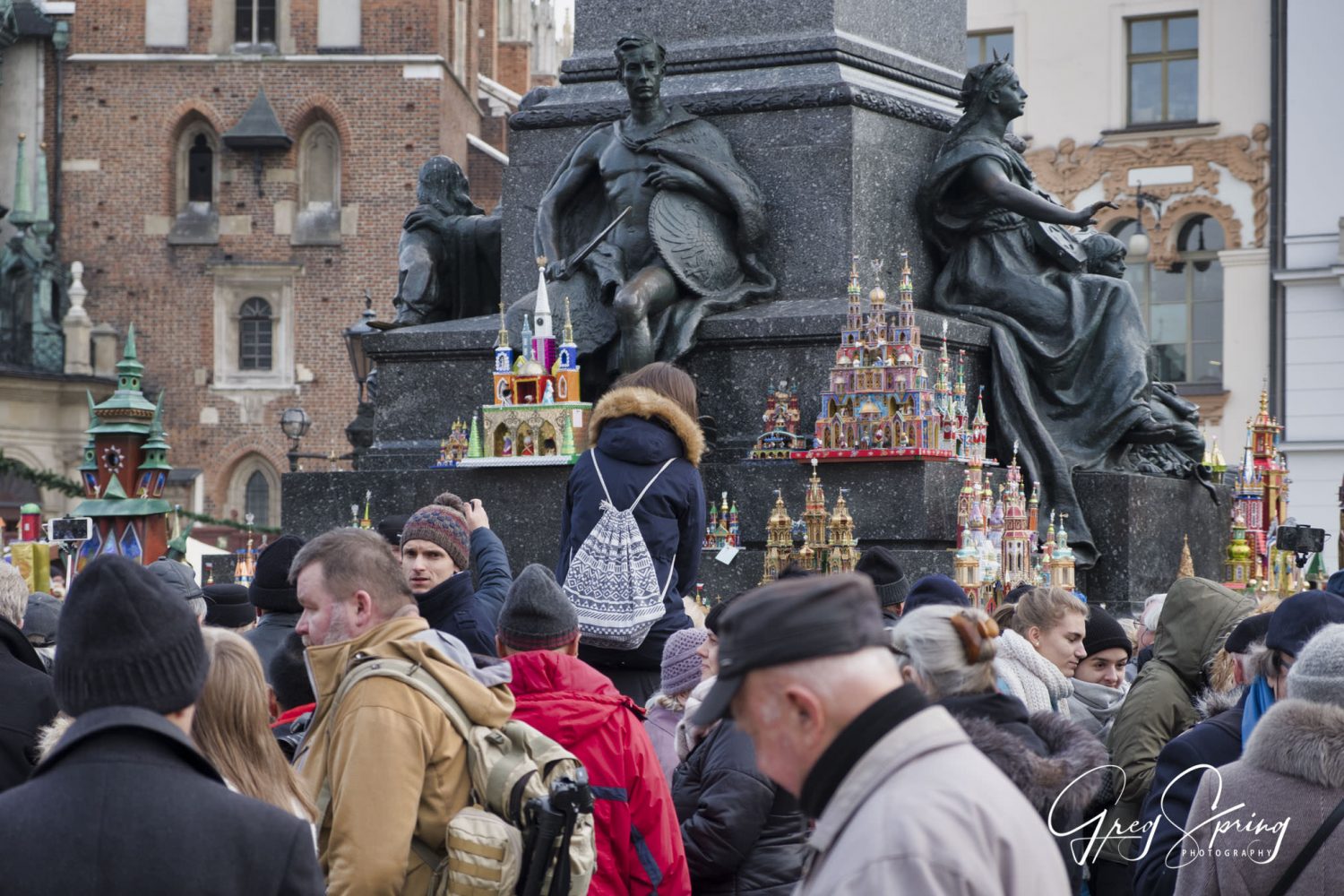On the first Thursday of December, the crowds are so tightly knit around Adamek, that we have to jump up to see over the shoulders of the person in front to catch a glimpse of the spectacles. In Kraków, Adamek is the statue of Adam Mickiewicz in the center of the Main Market Square. Today, the Szopki, created for a ‘best of’ contest, are being placed on display on the monument steps below Adam’s feet.
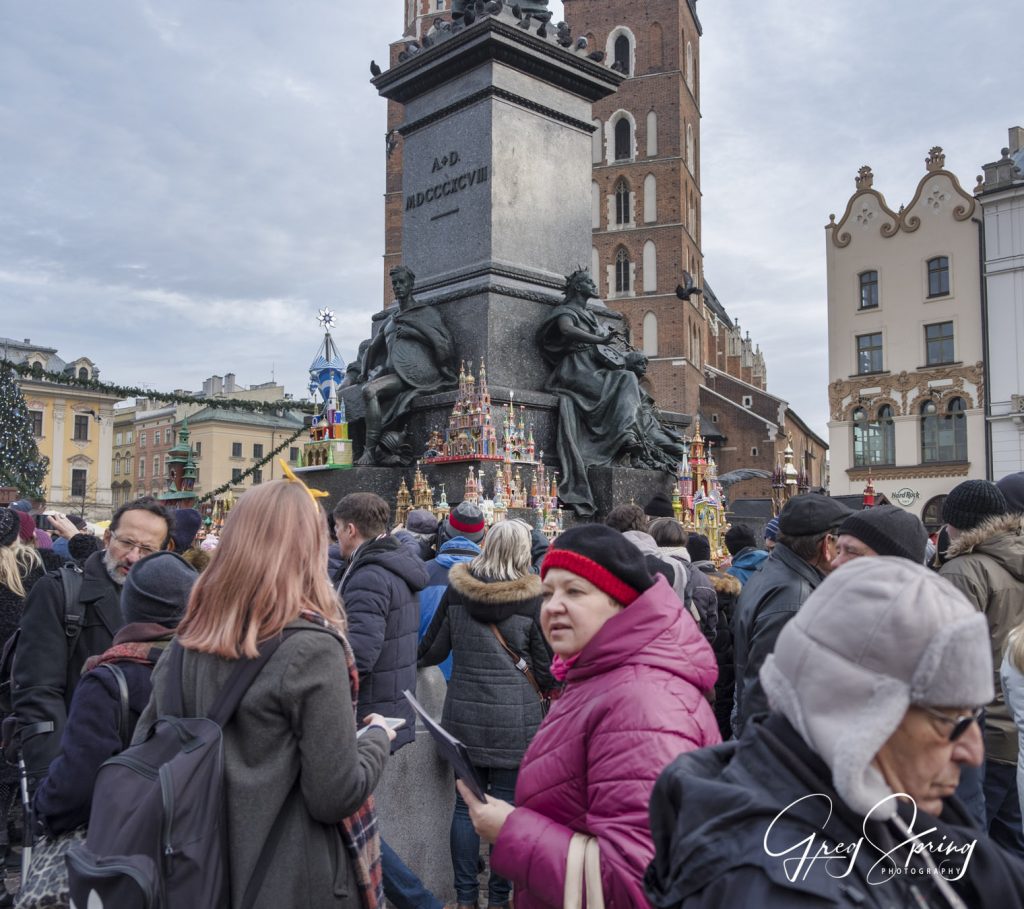
As people mill around taking pictures and drinking mulled wine and coffee, some very large complicated szopki, with their towers and flags, are being hoisted at the registration booth and shuttled high over the heads of the crowd to find a nook at the statue’s base. It is cold and the Christmas market is in full swing with the food and drink merchants raking in extra złoty from this crowd. Something special is definitely in work here as announcements are long, detailed, and in both Polish and English. That means tourists are aloft and being encouraged into the scene.
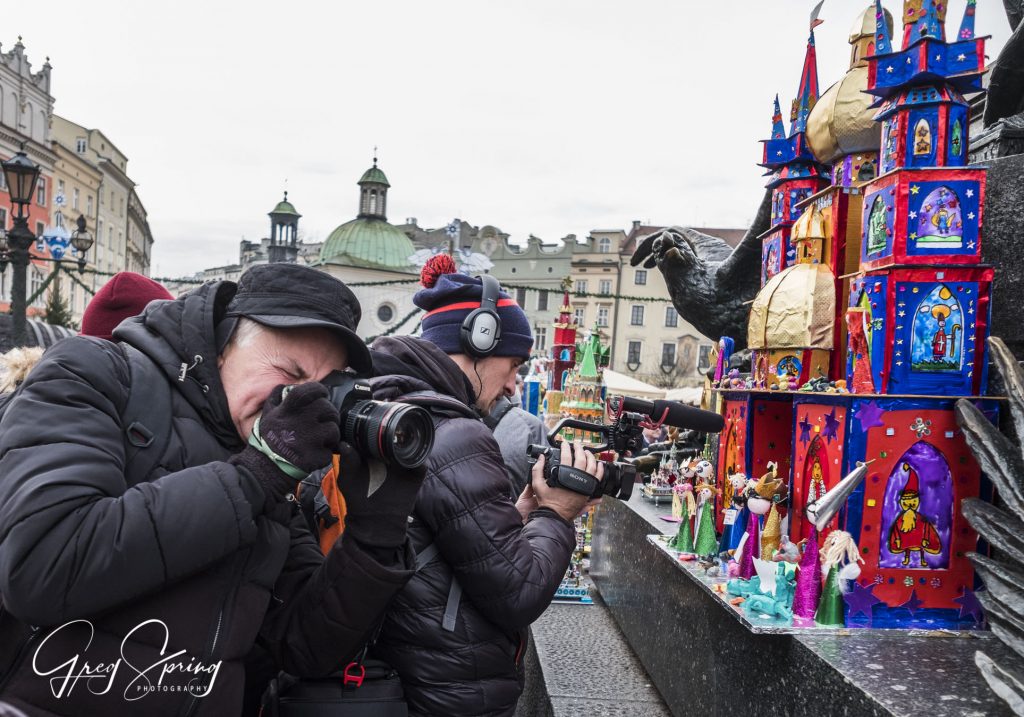
The definition of a Szopka (singular) or Szopki (plural Shoh-pkey) is, in its most elementary, a crèche, a manger, or a nativity scene of sorts. But there is no crèche anywhere in the world that’s likely to look like a Szopka which is a complex variant of a traditional Christmas nativity scene and a fantastic glittering feat of architecture echoing the overall character of Kraków’s buildings, churches, towers, and castles. These whimsical constructions reflect the splendidly royal theme of Kraków’s history and incorporate a celebration of Christmas.
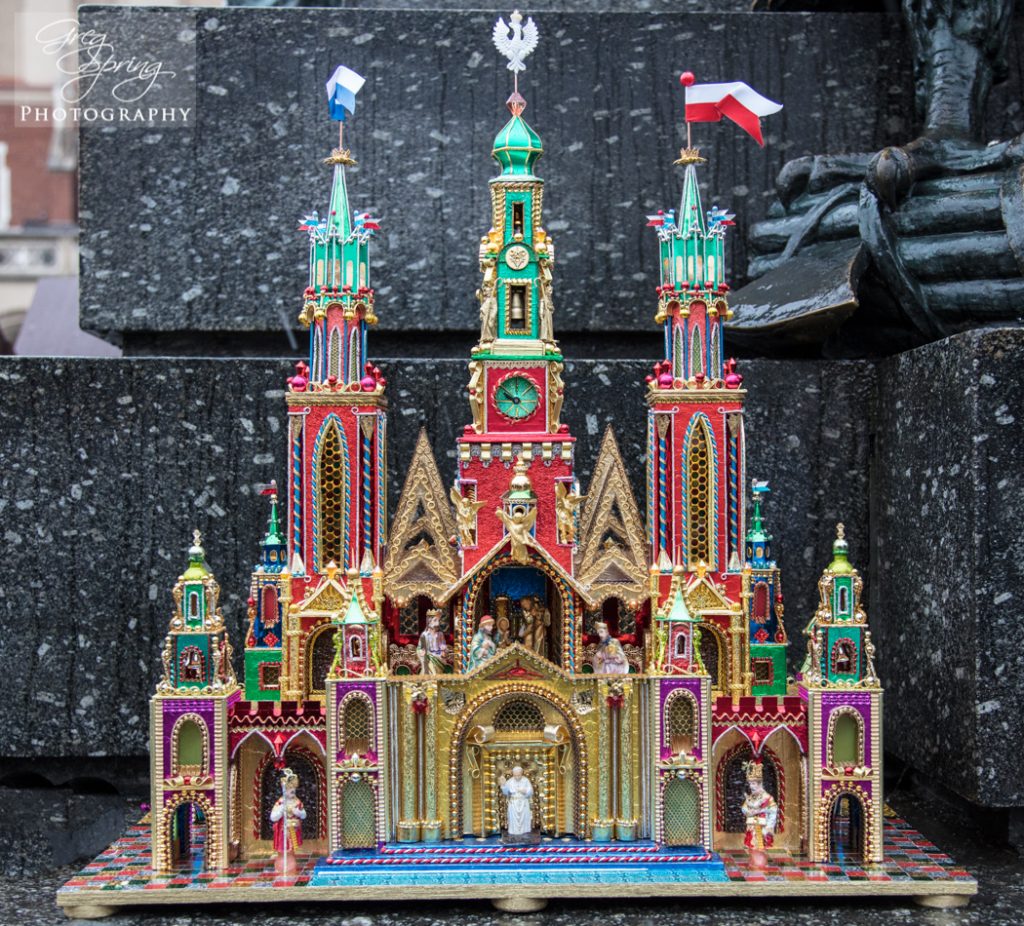
Today’s event is the culmination of an annual contest and challenge to the citizens of Kraków: create the most beautiful or unique artistic rendering of a Nativity scene in the Kraków-style. Today the citizens are revealing their architectural masterpieces created from paper, metal, glitter, clay, mâché, and paint. These artistic sculptures, fashioned by both adults and children, are not simple projects. Most of them have been in work since the last contest last year. And they are extravagant; a riot of colorful ornamented palaces that are sometimes animated, scored and lit. The core inspiration is drawn from the architecture of the Old Town of Kraków, the former, ancient, and royal capital of Poland.
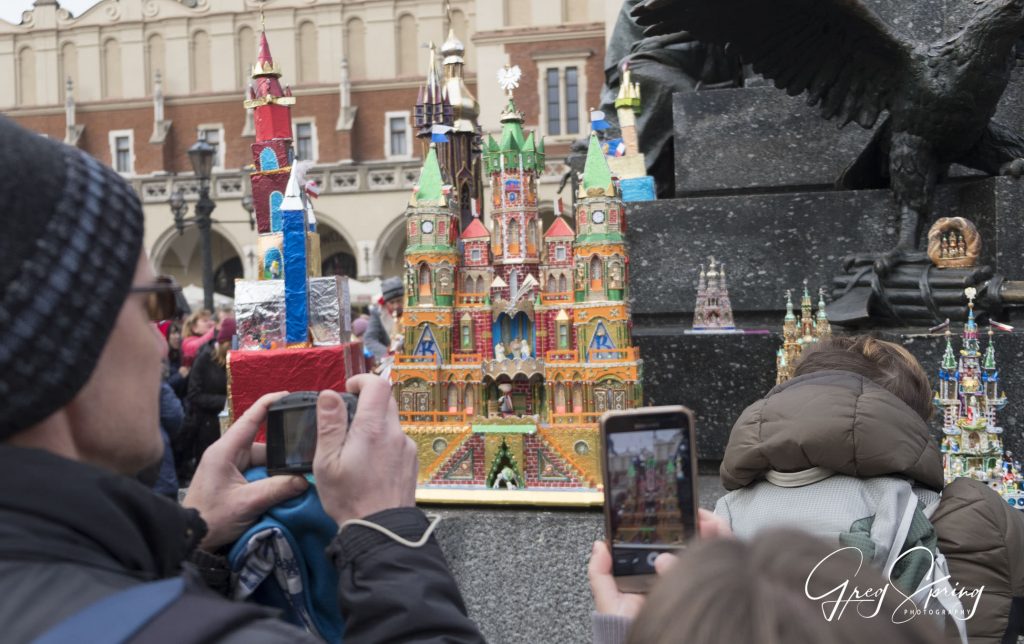
As in a normal nativity scene, there are the typical characters of Mary, Joseph, Jesus, shepherds, angels, animals, and Magi. The religious theme sets a tone, however, there are also fairy tale characters, national heroes, saints, and legendary figures like St. George who fights a deadly dragon, one of the icons of the city of Kraków. Demons and devils are also incorporated as the villains in the battle of good against evil. You might find a politician or two incorporated into the scene as well as patriotic flags flying from the ramparts. And in Poland, rest assured Pope John Paul will pop up in a door or balcony often. The szopki are crowned with towers, balconies, buttresses and the onion-shaped cupolas of the region. All of the city elements, architectural, cultural, political, religious and historical may be incorporated.
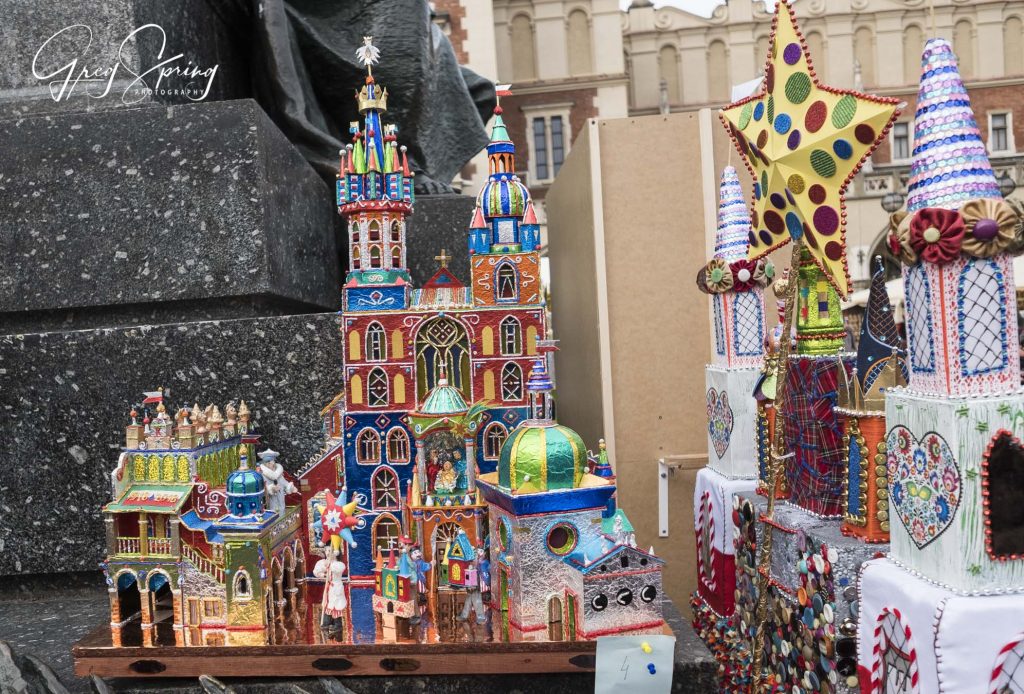
Some animated dioramas may reveal angels blowing trumpets from a tower’s balconies while battles between knights and Satanic characters rage below; perhaps on a carousel that reveals a scene as it revolves through little doors that push open and close. Sometimes a trumpeter is playing the iconic trumpet herald from the top of a tower, another symbol endemic to Kraków.
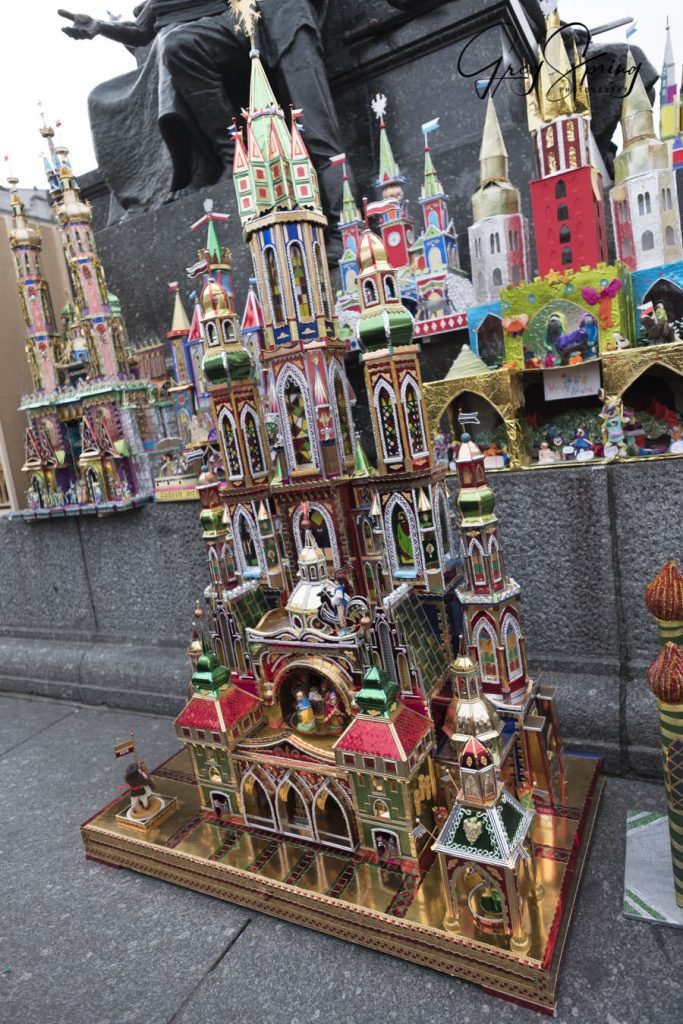
The art of Kraków nativity scene-making has been placed on the UNESCO Representative List of Intangible Cultural Heritage of Humanity. Pretty lofty words for a community project where anyone and everyone gets into the act: schools, charitable organizations, clubs, groups of all varieties and also, the lone-driven individual artist. This is a traditional craft strictly connected with this city. The artisanal heritage of nativity scene-making is passed down from generation to generation, from master craftsmen to apprentices, from parents to children.

Szopki have been part of the Kraków Christmas scene since the 13th century. The competition for the most creative and beautiful szopki started somewhere in the 19th century when wealthy families invited theatrical troupes into their homes to participate in holiday festivities. Nativity pageant troupes with their puppeteers, actors, musicians, and carolers would gather in the main market square and try to outdo each other in order to be invited into the homes of the gentry. The style developed with theatrical props of multi-storied ornamental steeples around the central figures of a story. The puppet shows told tales of the battle between good and evil, folk tales, fantastic legends and the core Christmas story with embellishments.

The Krakow Nativity Scene contest began in 1937. In workshops, schools, and homes, the citizens of the city work throughout the year to construct their best for the contest. Each year on the first Thursday of December, the szopki artists gather early in the morning in the Market Square to reveal their creations. Crowds of spectators and photographers gather to admire the masterpieces. At midday, the contestants, in ceremonial procession, carry their works to a main stage set in the market for evaluation by the panel of judges. I especially love watching the lone child proudly walking with his or her szopka in the ceremonial parade.

Children’s creations are entered in a special category. This one may be either from an individual or from a school group.
If you are in Krakow, this year’s entries will be on exhibition in the Celestat museum on Lubicz street throughout the Christmas season. Some will also be displayed throughout the city in shop windows and restaurants. They are the miniature wonderlands of Christmas typical of Kraków, the purveyors of the spirit and stories of the season.
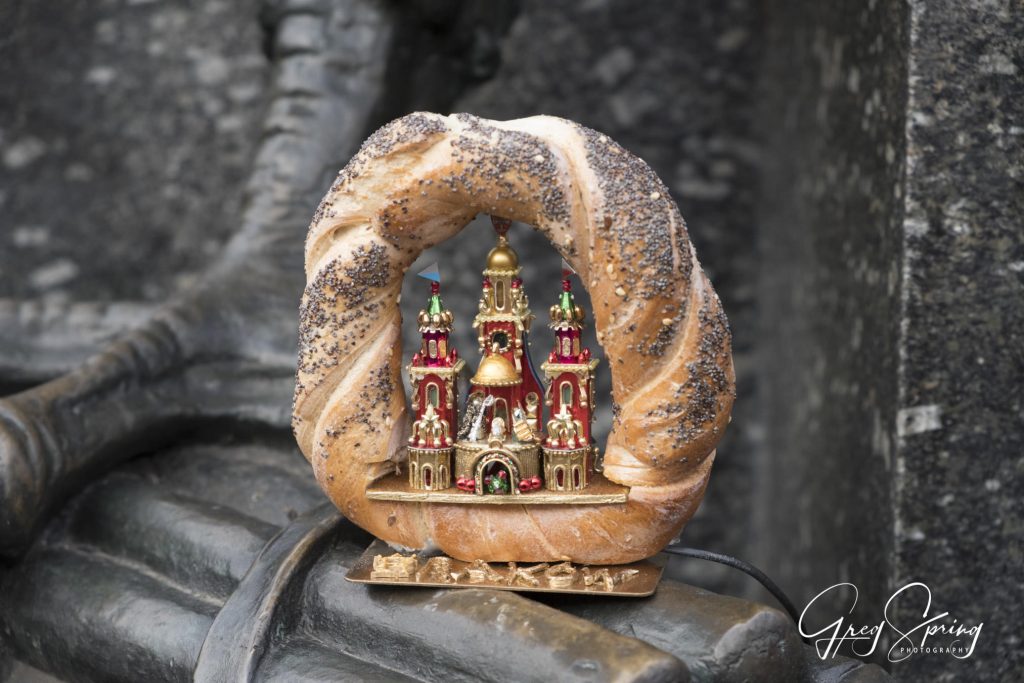
The contest has a special category for ‘miniatures’. This year, someone’s creative effort in miniature incorporated the ‘obwarzanek’, the Kraków pretzel sold on the street corners of the city.
For history, I relied on Łukasz Olszewski’s Krakow Nativity Scenes, [History Museum of the city of Krakow], Krakow 2009.
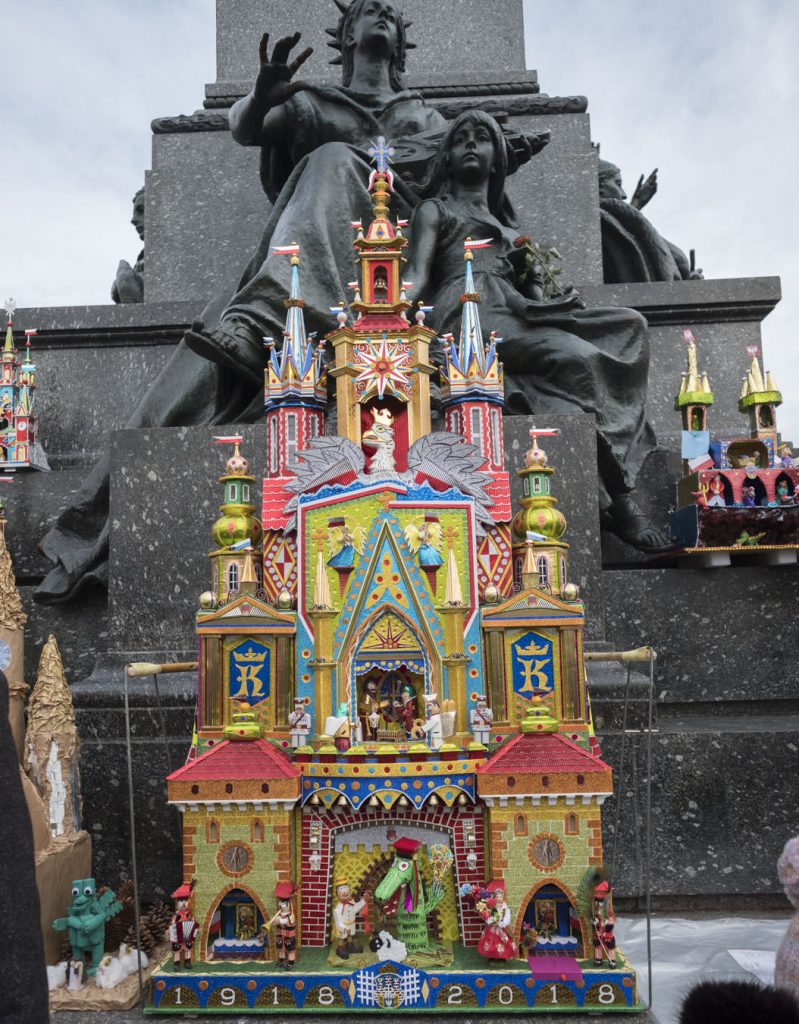
“Why Poland?” is a blog written and produced by Grace Nagiecka with photos by Gregory Spring. Kraków, Poland 2018.
We invite you to visit our other blogs, “Wanderlusting Dreams” https://www.wanderlustingdreams.com and “Greg Spring Photography” https://www.gregoryspring.com.
Thank you for supporting us by reading and, hopefully, enjoying our work.
